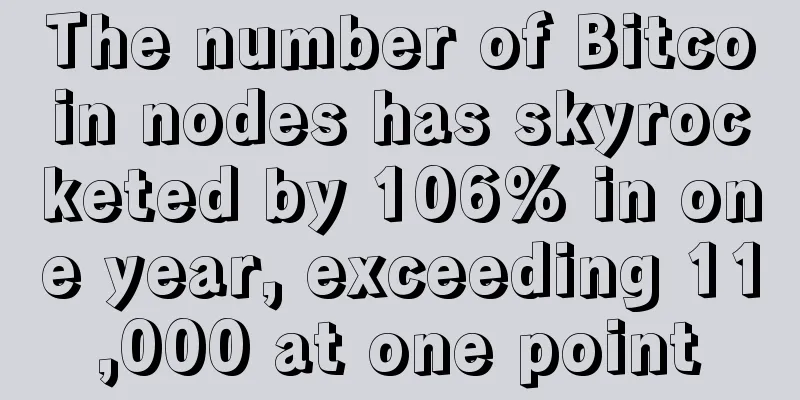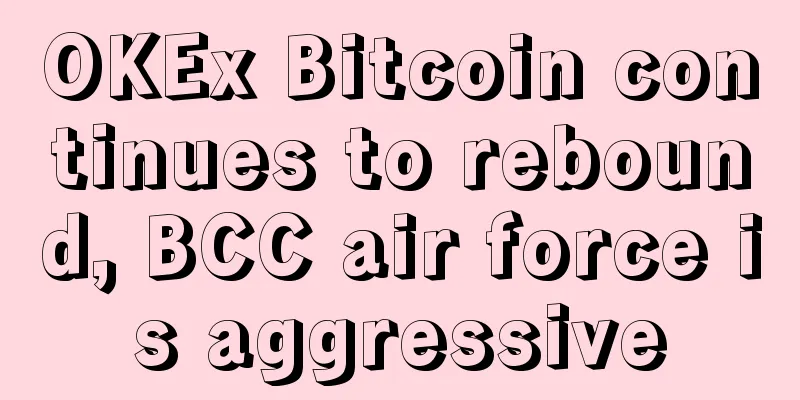The number of Bitcoin nodes has skyrocketed by 106% in one year, exceeding 11,000 at one point

|
Back in 2016, the number of full nodes in the Bitcoin Core network had been declining. At that time, Bitcoin enthusiasts believed that the number of Bitcoin nodes would continue to decline, and the issue of the change in the number of nodes became the focus of debate on Bitcoin expansion. However, contrary to most people's predictions, the number of full nodes running Bitcoin has been increasing, and over the past year, the number of nodes has increased by more than 106%. What is a full nodeA full node is essentially a computer connected to a cryptocurrency network that has downloaded every single block and transaction on the blockchain. Because full nodes keep track of the activity of the entire blockchain network, they rely on the storage and bandwidth of the device. A number of digital assets such as Dash, Litecoin, Bitcoin Cash, Ethereum, and Bitcoin Core run full nodes on their blockchain networks. Of course, there are also many "lightweight nodes", which means that you don't need to download the entire blockchain data, but only download the block data at the top of the blockchain and confirm the corresponding transactions. One of the cheapest ways to build a full node is to use a Raspberry Pi computer and a gigabyte external drive worth only $100. There are also many vendors that sell rebuilt full nodes, but these are usually very expensive. The number of Bitcoin nodes exceeded 11,000 in 2018Recently, the number of nodes that can be detected in the Bitcoin network reached 11,703. The number of nodes is never static but constantly changes as participants leave or join the network. In the last year, this number has grown significantly, and according to Bitnodes statistics, we found that the average number of full nodes in the last 12 months has reached 8,643. The countries with the most full nodes running at the time of this data observation include the United States, Germany, China, France, the Netherlands, Canada, the United Kingdom, and Russia. These nodes are also running in countries with poor Internet services and economic development, including Venezuela, Algeria, Mexico, Namibia, Pakistan, and Nigeria. Core software and optional clientsThere are many different types and natures of software programs running the Bitcoin network. According to Coin Dance, there are 9,002 nodes running Bitcoin Core, 542 running Bitcoin Unlimited, 294 running Bitcore, and nine other node programs. Even after the heated debate over Bitcoin scaling last summer and fall, nodes that provided information to the User Access Soft Fork (UASF) and supported Segewit2x continue to operate today. A significant number of Core supporters oppose alternative node software and do not recommend using these alternative node software "because it is difficult to determine whether they are 100% running the correct consensus rules." Several alternative clients begin supporting the Bitcoin Cash networkAnother interesting trend that has occurred over the last year is the hard fork of Bitcoin Cash from the Bitcoin main chain on August 1st of last year. Since the emergence of BCH nodes, the number of nodes available on the Bitcoin network has dropped significantly. Those that support BCH, such as Bitcoin Unlimited, XT, and others have begun to support the BCH network and node count. Recently, the number of BCH nodes has reached 1024 based on four clients, including Bitcoin Unlimited, XT, and others. The number of nodes supporting BCH has increased significantly over time, and we have seen BCH nodes reach an all-time high in November and December 2017. Even though BCH uses larger blocks, Bitcoin’s main chain is still 20GB larger than BCH’s.In general, both the Bitcoin and Bitcoin Cash blockchains have grown in terms of storage capacity. The current Core network blockchain size has increased by 50GB in a year, and the Bitcoin Cash blockchain is 8,517 blocks ahead of the Core blockchain. Most people would assume that since BCH miners are mining larger blocks, a full node client would be larger. However, as of today, the Bitcoin blockchain is nearly 20.66GB larger than Bitcoin Cash, even though Bitcoin Cash blocks are between 2 and 8MB. Due to the popularity of Simplified Payment Verification (SPV) wallets, the majority of nodes in both blockchains are running with lightweight clients. Despite SPV clients eclipsing full node clients, the number of full nodes in the Bitcoin and Bitcoin Cash networks continues to grow. |
<<: BTM machine is launched: you can withdraw Bitcoin by scanning the QR code with your mobile phone
Recommend
Ethereum "Berlin" hard fork upgrade is set! Expected to be implemented on April 14
Ethereum "Berlin" hard fork upgrade is ...
Forehead with vertical lines - Detailed explanation of forehead vertical lines
People with forehead tattoos If you have a Wang c...
The Impossible Triangle of Blockchain: Decentralization, Security, and High Performance
In the distributed field, there is a famous CAP t...
Gold bulls change their attitude! "New Bond King": Bitcoin may be better than gold
Jeffrey Gundlach, CEO of DoubleLine Capital and t...
Is it good for a woman to have a mole on the instep?
Everyone has moles on their body to a greater or ...
People with horizontal lines on the root of the nose are prone to death. Is the fate of people with horizontal lines on the root of the nose good?
Men with horizontal lines on their noses will los...
Among the 8 audited companies, 7 were suspected of token issuance and 1 was involved in mining.
Today, the Shenzhen Municipal Financial Supervisi...
The facial features of people who are often obsessed with the dream of getting rich
Everyone in the world loves money. With money, th...
What facial features of women have high emotional intelligence and attract others to like them
People like to get along with people with high em...
Mole physiognomy to predict the development of love fortune
Everyone should have his or her own life and his ...
What kind of face is the most unfeeling woman
Heartless people usually don't care about pas...
Content Sharing Platform LBRY Launches Creator-Controlled Blockchain Test App
Rage Comment : LBRY, a blockchain startup content...
What does the M line on a woman's palm mean? Does it affect her fortune?
There are many lines on our faces and palms, whic...
Palm lines and the joy of destiny
Want to know what your destiny is? Everyone wants...
The influence of the mole on your back on your health
Is it good to have a mole on the back? Is it good...









